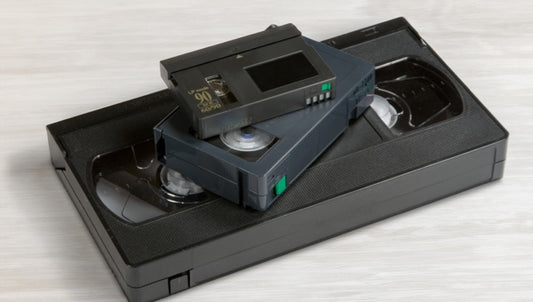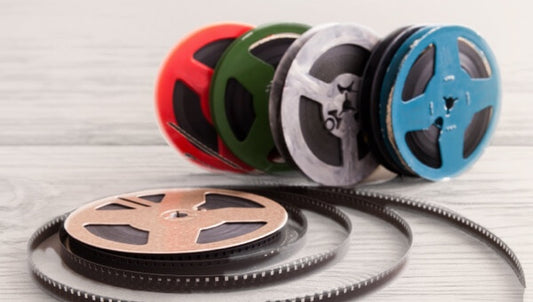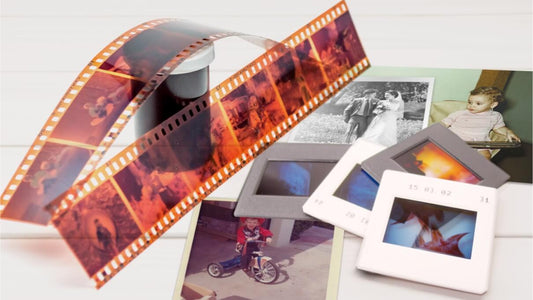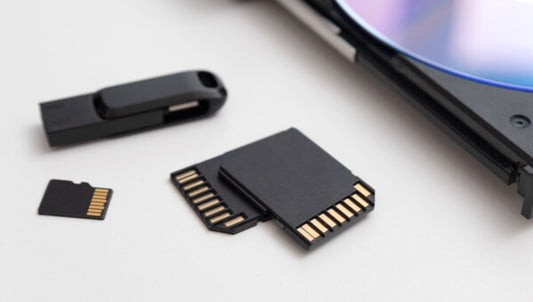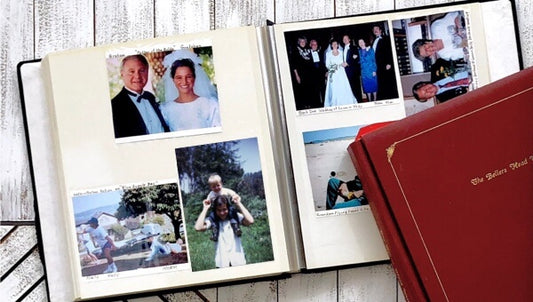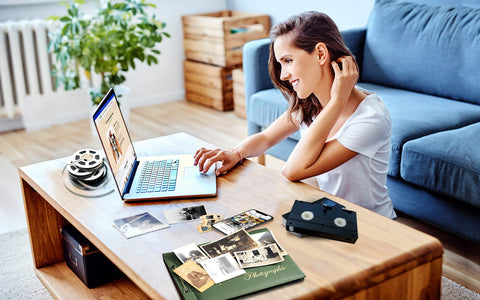Long before digital streaming and CDs, 8-tracks were the most popular way to listen to music on the go. They didn’t skip like vinyl and were also more durable, but when did 8-track come out, who invented it, and how did it become so popular during the 60s and 70s?
In addition to preserving memories for 12 million families, Capture likes to preserve the history of analog formats that helped shape our lives. We put together this history of 8-track tapes to not only cover the origin of 8 track tapes, but to detail the rise and fall of the beloved audio format.
Keep reading to learn when did 8-track come out, how audio formats evolved throughout the years leading up to the introduction of 8-track technology, and how the format influences our habits before declining due to newer technology.
Jump to:
- Understanding the Origins of 8-Track Tapes
- When did 8 Track Come Out? Release Date of 8-Track Tapes
- Popularity and Impact of 8-Track Tapes
- Transition from Vinyl to 8-Track
- Legacy and Decline of 8-Track Tapes
Understanding the Origins of 8-Track Tapes

Prior to the invention of 8-track players, the primary audio format was vinyl. While vinyl records were, and still are, a fantastic way to listen to full albums at home or using a jukebox, there were some downsides, particularly if you wanted to listen to them while driving a car or moving around.
It was clear that a mobile audio format was needed, which is where the 8-track player comes in. However, oddly enough, audio cassette players were invented first in 1962 by Phillips. The cassette tape was introduced to Europe in 1963 and the U.S. in 1964.
Despite being the older technology, they didn’t become the most popular on-the-go audio format until they began to be used predominantly in classic 80s cars. Prior to that, 8-track was the more popular choice.
The reason for this will become clear, but before the invention of the 8-track tape, other technologies needed to be introduced. The most important was the invention by George Eash in 1953 known as the Fidelipac cartridge or NAB cartridge. This was a 3-track magnetic tape sound recording format used for radio broadcasting and influences both the 8-track and the cassette.
Next came the Muntz Stereo-Pak cartridge that was developed in the late 1950s and early 1960s. The inventor, Earl “Madman” Muntz licensed popular music albums from major record companies on these 4-tracks.
This technology led directly to the invention of 8-track players when Bill Lear heard the 4-track during a ride in Muntz’s car. The goal was to create a longer playing cartridge system by doubling the recording time to 80 minutes.
When did 8 Track Come Out? Release Date of 8-Track Tapes
In 1964, the Stereo 8 Cartridge (known as the 8-track) was invented by Bill Lear of the Lear Jet Corporation along with Ampex, Ford Motor Company, General Motors, Motorola, and RCA Victor Records. It was introduced to the U.S. market the following year in 1965.
This format could play on an endless loop, so you didn’t have to flip it over like vinyl records or audio cassettes. This was a similar breakthrough to Super 8 film that didn’t have to flip the spool each time to record longer reel-to-reel home movies. However, the continuous loop playback capability wasn’t the main reason that it was more popular than audio cassettes up until its iconic 1980s popularity.
Popularity and Impact of 8-Track Tapes
Both four-track and eight-track technologies were adopted by the automobile industry. Soon after the 8-track cartridge release date, Ford Motor Company factory-installed 8-track tape players as an option on 1966 models of the Mustang, Thunderbird, and Lincoln.
Additionally, in the mid-1960s record companies like Columbia House began releasing Boombox-style home players as well as popular albums on the new Hi-Fi 8-track format. By the late 1960s, it was clear that 8-track was a hit and became the largest segment of the consumer electronics market.
Plus, 8-track cartridges were relatively cheap with most costing around $2 to $3. The most expensive 8-track in 1970 was the Beatles Greatest Hits cartridge that had a $4.97 price tag. More and more albums began to be released on 8-track and the analog format hit peak popularity during the mid to late 70s.
Transition from Vinyl to 8-Track

While 8-track players and tapes became extremely popular in the 1960s and 1970s, they never completely replaced vinyl records. While 8-tracks offered fantastic sound quality for the time, many people preferred and continue to prefer the intimate sound of vinyl recordings.
The main impact that eight-track cartridges had on culture and the music industry was the ability to choose what you listened to in your vehicle. Before 8-track tape cartridges were installed in cars, you could only listen to music on the radio.
That’s because vinyl records would skip too much to be used while on the road. Plus, they could become scratched easily, which would distort the sound and add clicks and cracks. Not only that, but you couldn’t restore vinyl like you could restore videotapes or other analog formats because vinyl records are made by carving out grooves in the vinyl material.
They remained the popular choice in vehicles until the compact cassette was reintroduced. Not only did it offer the ability to rewind, fast-forward, and pause, but it was more compact. Plus, you could easily use a tape recorder to record cassettes yourself.
With the release of the Sony Walkman in 1979, the audio cassette tape format started to overtake 8-tracks as the go-to audio format. Not only did the Walkman become one of the most popular presents for dads in the late 70s and early 80s, but audio cassette players were installed in vehicles instead of 8-track players. This was the beginning of the end of the eight-track format.
Legacy and Decline of 8-Track Tapes
Due to the popularity of the audio cassette and later the CD and Mp3 formats, eight-track tape players became obsolete. People started to convert to digital formats due to the improved audio quality, increased durability, and other benefits. While 8-track tape heads and pinch rollers would wear out, a CD player used a laser and would last much longer than 8-track players or audio cassettes.
This shift to digital didn’t only occur with the evolution of audio formats. People also started to switch from CDs to DVDs as well as from VHS to digital. It was clear that the popularity of 8-track tapes and other analog formats was rapidly declining, leading directly to obsolescence.
However, there is still plenty of nostalgia for 8-track tapes and players. You can still buy them on places like eBay and 8-Track Heaven. However, this is mostly for collectors, nostalgia, or classic car owners because other formats simply offer better quality.
Conclusion
Now that you understand when did 8-track come out as well as the complete 8-track cassette timeline, you can see that they revolutionized music on the go and became one of the most popular electronics options in the 1960s and 1970s. While you might have nostalgic feelings for 8-track tapes, they can wear out quite easily. That’s why it’s important to convert to digital whenever possible.
The shift to digital can also preserve your home movies, photos, film reels, and other precious memories. If you want to make sure your memories are never lost, Capture can help you convert to high-quality digital format for an affordable price. Click here to learn why Capture is the best choice for digitization.





